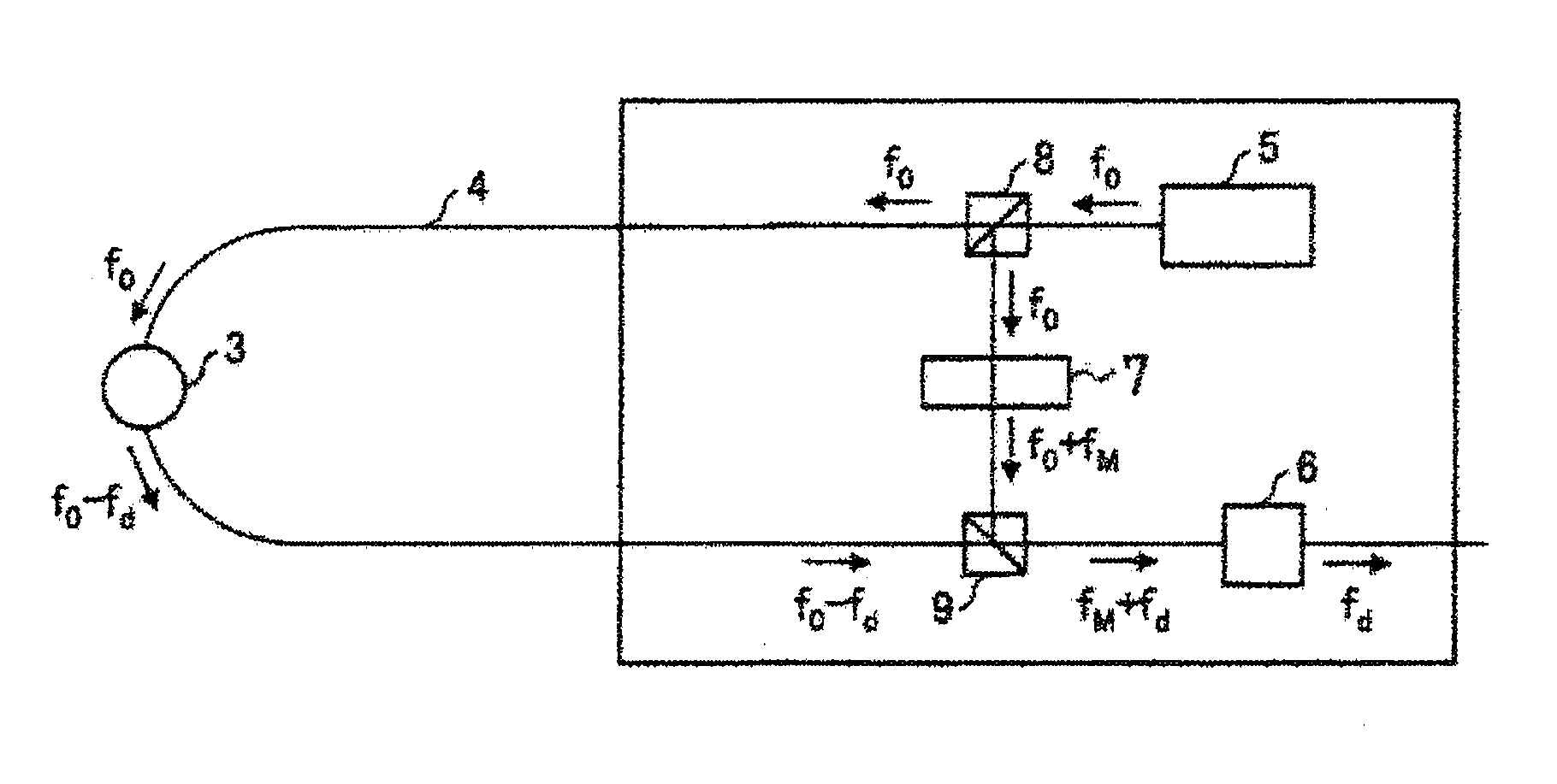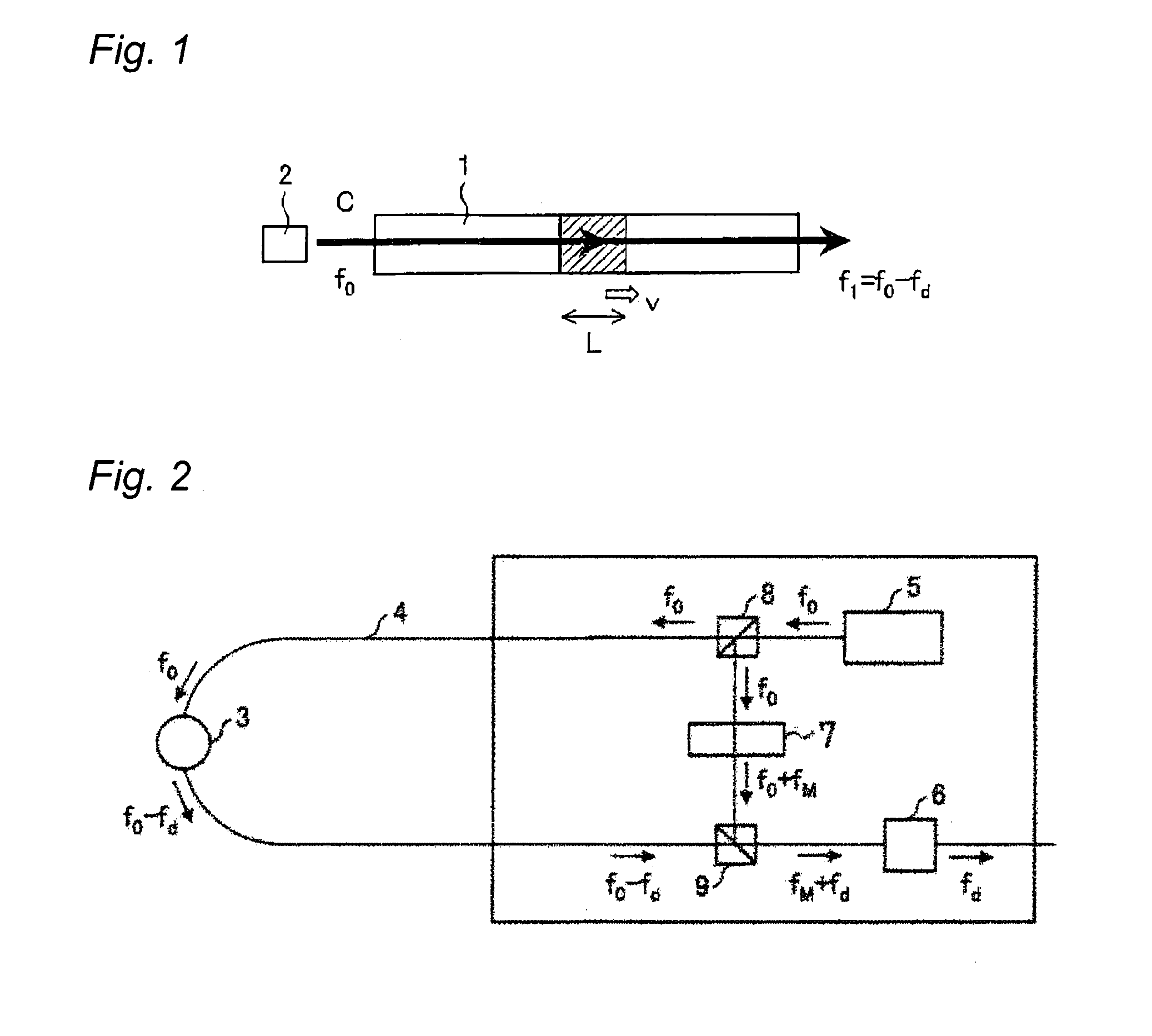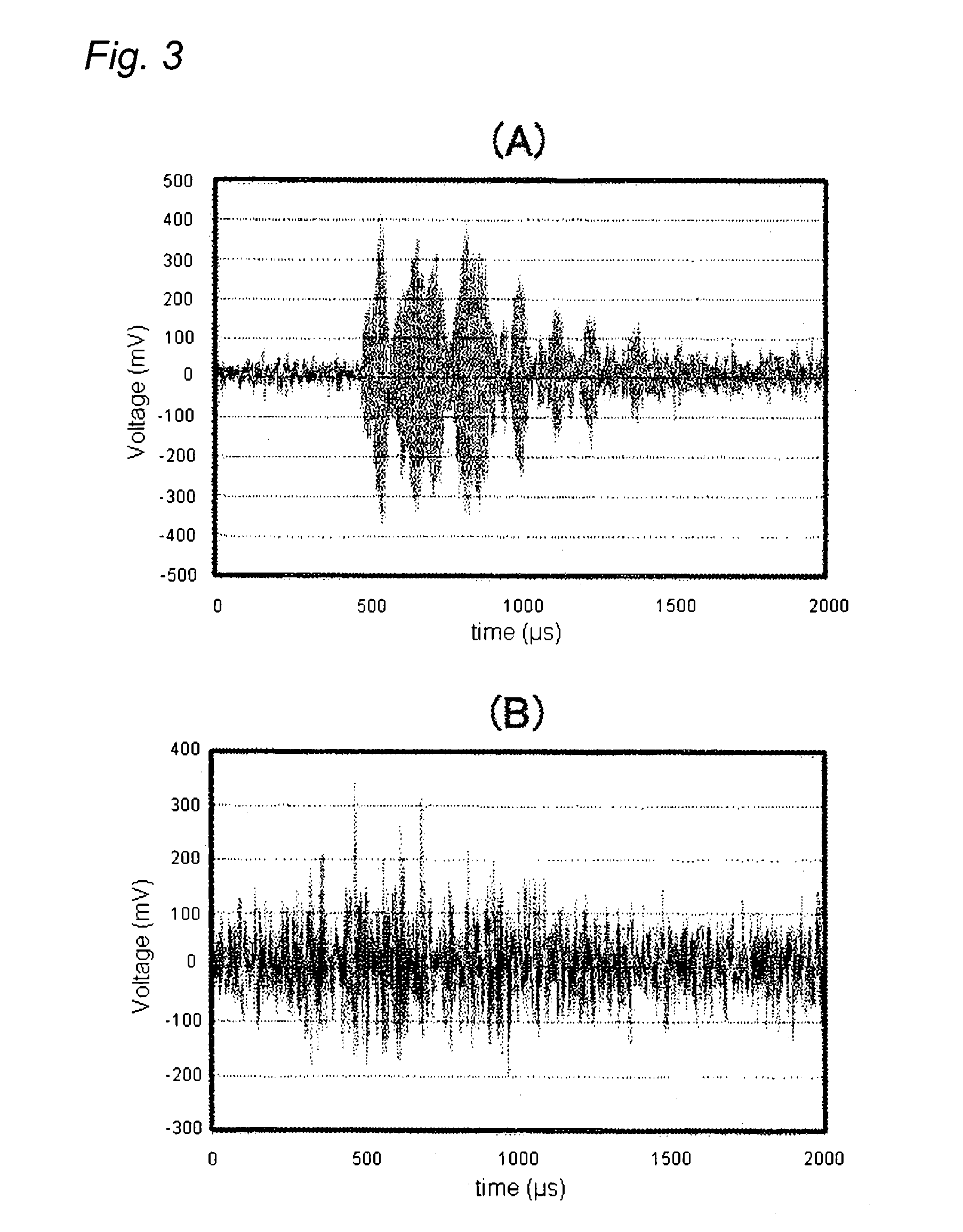Method for inspecting corrosion under insulation
a technology of corrosion inspection and insulation, applied in the direction of instruments, processing detected response signals, using mechanical means, etc., can solve the problems of limited application conditions, inability to detect, and limited sites to which this method can be applied, and achieve the effect of low cos
- Summary
- Abstract
- Description
- Claims
- Application Information
AI Technical Summary
Benefits of technology
Problems solved by technology
Method used
Image
Examples
example 1
[0078]An insulation was removed from an air oxidation reactor (an inner diameter of 3.8 m) within which a fluid was moved, and four FOD sensors (ch1 to ch4) were attached in a circumference direction with 90° pitches. The coat on an exterior surface was removed by a sand paper and the FOD sensors were attached to the exterior surface with a heat-resistant epoxy resin-based adhesive and fixed using an aluminum tape which was affixed on the FOD sensors.
[0079]The corrosion having an area of about 320 mm×about 90 mm and a depth of about 0.3 mm to about 0.5 mm was found about 2.5 m above the FOD sensor of ch1. The corrosion was not found within 4 m from the FOD sensor of ch2. The corrosion having an area of about 350 mm×about 65 mm and a depth of about 0.3 mm to about 1.0 mm was found about 2.5 m above the FOD sensor of ch3 and the corrosion having an area of about 720 mm×about 110 mm and a depth of about 0.3 mm to about 0.6 mm was found at a position which was in the distance of about 2...
example 2
[0089]A mock-up piping was prepared as shown in FIG. 9.
[0090]An insulation 13 was attached to a carbon steel pipe 10 having an entire length of 5 m and a silicone oil which was heated by a heater 12 was circulated through the pipe 10. Further, corrosion was artificially accelerated in order to generate CUI efficiently. Specifically, pure water was continuously dropped from a dropping device 11 to a surface of the pipe 10 in such a dropping amount that was finely adjusted to produce a wet state and a dry state alternately. In addition, common salt was applied to the surface of the pipe 10. Further, the silicone oil circulating through the pipe 10 was heated in a range of 60° C. to 70° C., in order to accelerate the corrosions artificially.
[0091]The FOD sensor 14 was fixed by using a U-shaped bolt about one month after the start of the artificial acceleration of corrosion.
[0092]The silicone oil was heated 3 hours after the start of the AE determination, so that an oil temperature was ...
PUM
 Login to View More
Login to View More Abstract
Description
Claims
Application Information
 Login to View More
Login to View More - R&D
- Intellectual Property
- Life Sciences
- Materials
- Tech Scout
- Unparalleled Data Quality
- Higher Quality Content
- 60% Fewer Hallucinations
Browse by: Latest US Patents, China's latest patents, Technical Efficacy Thesaurus, Application Domain, Technology Topic, Popular Technical Reports.
© 2025 PatSnap. All rights reserved.Legal|Privacy policy|Modern Slavery Act Transparency Statement|Sitemap|About US| Contact US: help@patsnap.com



